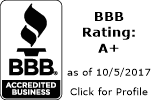Chimney Cleaning for Madison, CT, Killingworth, CT and Surrounding Areas
Our Chimney Cleaning Services Include…
- Fireplace Sweeping
- Wood Stove Sweeping
- Oil Flue Sweeping
- Pellet Stove Sweeping
- Chimney Inspections
Our Chimney Repair Services Include…
- Chimney Pointing
- Waterproofing
- Chimney Lining
Benefits of Chimney Repair Services
As with any part of your home, regular inspection and maintenance is vital to keep it intact. Our team can help provide chimney repair whenever necessary to keep it in good condition for decades to come. This benefits you and your home in a number of ways.
- Creates a Seal: Regular chimney repair and maintenance keeps out moisture and critters, sealing your home against the difficult Connecticut winter months and discouraging unwanted wildlife from entering your living space.
- Safety: When twigs, dirt, soot, creosote, and other debris build up in your chimney, it creates a serious fire, smoke, and carbon monoxide risk. Because carbon monoxide is odorless and colorless, it can be difficult to detect until it's too late. Regular chimney cleaning and repair keeps your chimney operating safely.
- Heating Efficiency: If your chimney is kept properly clean and in good repair, it allows for a more efficient and thorough burn. This improves your home's overall warmth and creates a more comfortable atmosphere.
- Protects Your Home's Structure: Your chimney is a vital component in both your foundation and your roof construction. If there are issues with the chimney, it can translate to other areas and cause serious structural damage. Keeping your chimney in good repair can help to prevent structural damage.
- Saves You Money: Regular maintenance and small repairs when necessary keep expensive emergency repair costs down and reduce the likelihood of anything unexpected happening. A properly running chimney can also heat your home more effectively. This saves you money in utility bills in the long run.
Reach out to our team to schedule your chimney repair today!
Signs Your Chimney Needs Repair
1. Cracked or Damaged Bricks and Mortar
Visible cracks, crumbling mortar, or missing bricks can compromise the structural integrity of your chimney. These issues can worsen over time due to weather exposure.
2. White Staining (Efflorescence)
White, powdery stains on the exterior of your chimney indicate moisture problems. While the stains can be cleaned, the underlying moisture issue needs to be addressed.
3. Rust
Rust on the damper or firebox is a sign that moisture is getting into your chimney. This can lead to further damage, including cracked flue tiles.
4. Spalling Bricks
If you notice pieces of brick flaking off or falling away, this is called spalling. It’s often caused by water entering the bricks and freezing, which expands and breaks them apart.
5. Chimney Leaks
Water stains on walls or ceilings near your chimney, or visible water inside the firebox, are clear signs of a leak. This could be due to a damaged chimney cap, flashing, or masonry.
6. Damaged Chimney Crown
The crown is the top part of the chimney that prevents water from entering. Cracks or deterioration in the crown can allow water to seep in, leading to further damage.
7. Smoke Backing Up Into Your Home
If smoke isn’t venting properly and is coming back into your home, it could indicate a blockage, creosote buildup, or a damaged flue.
8. Creosote Buildup
Excessive creosote, a black, tar-like substance, can build up inside the chimney and pose a fire hazard. Regular cleaning is essential to prevent this.
9. Shaling Flue Tiles
If you find thin slices of chimney tile in your fireplace, it’s a sign that the flue lining is deteriorating and needs repair or replacement.
10. Unpleasant Odors
A strong, musty smell coming from your chimney could indicate moisture or creosote buildup, both of which require attention.
11. Leaning Chimney
A chimney that is visibly leaning or separating from the house is a serious structural issue that requires immediate professional attention.
12. Deteriorated Flashing
Flashing is the metal seal where the chimney meets the roof. If it’s rusted, loose, or damaged, it can allow water to seep into your home.
13. Animal Activity
If you hear noises or see signs of animals like birds or squirrels in your chimney, it could mean the cap is damaged or missing.
14. Excessive Soot
A buildup of soot can reduce the efficiency of your chimney and increase the risk of a chimney fire.
15. Age of the Chimney
Older chimneys are more prone to wear and tear. If your chimney hasn’t been inspected in years, it’s a good idea to have a professional take a look.


